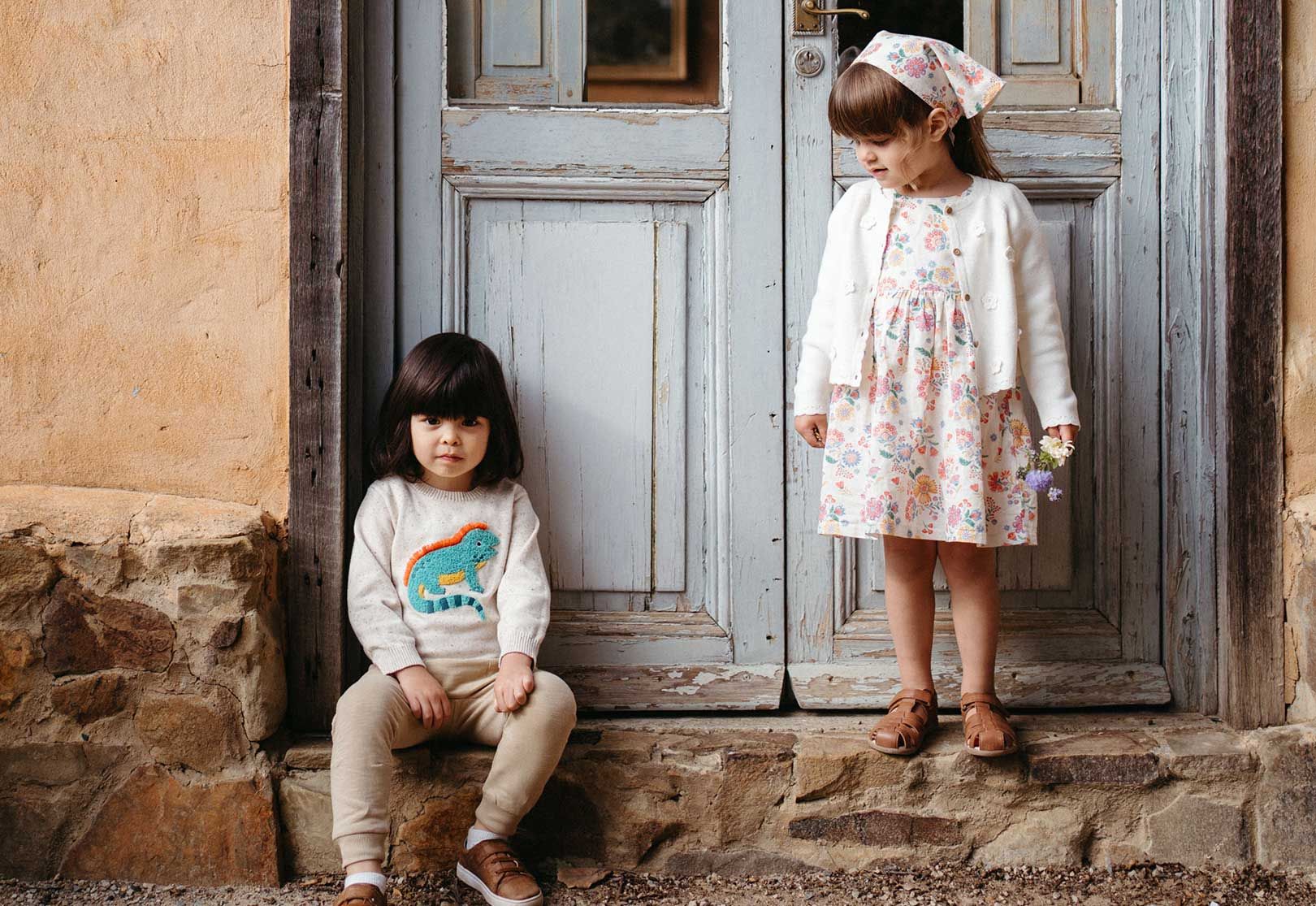
Behind the Design: Our Summer ‘Fiesta’ Collection
4 min read | 10 July 2025
7 min read | 29 July 2024
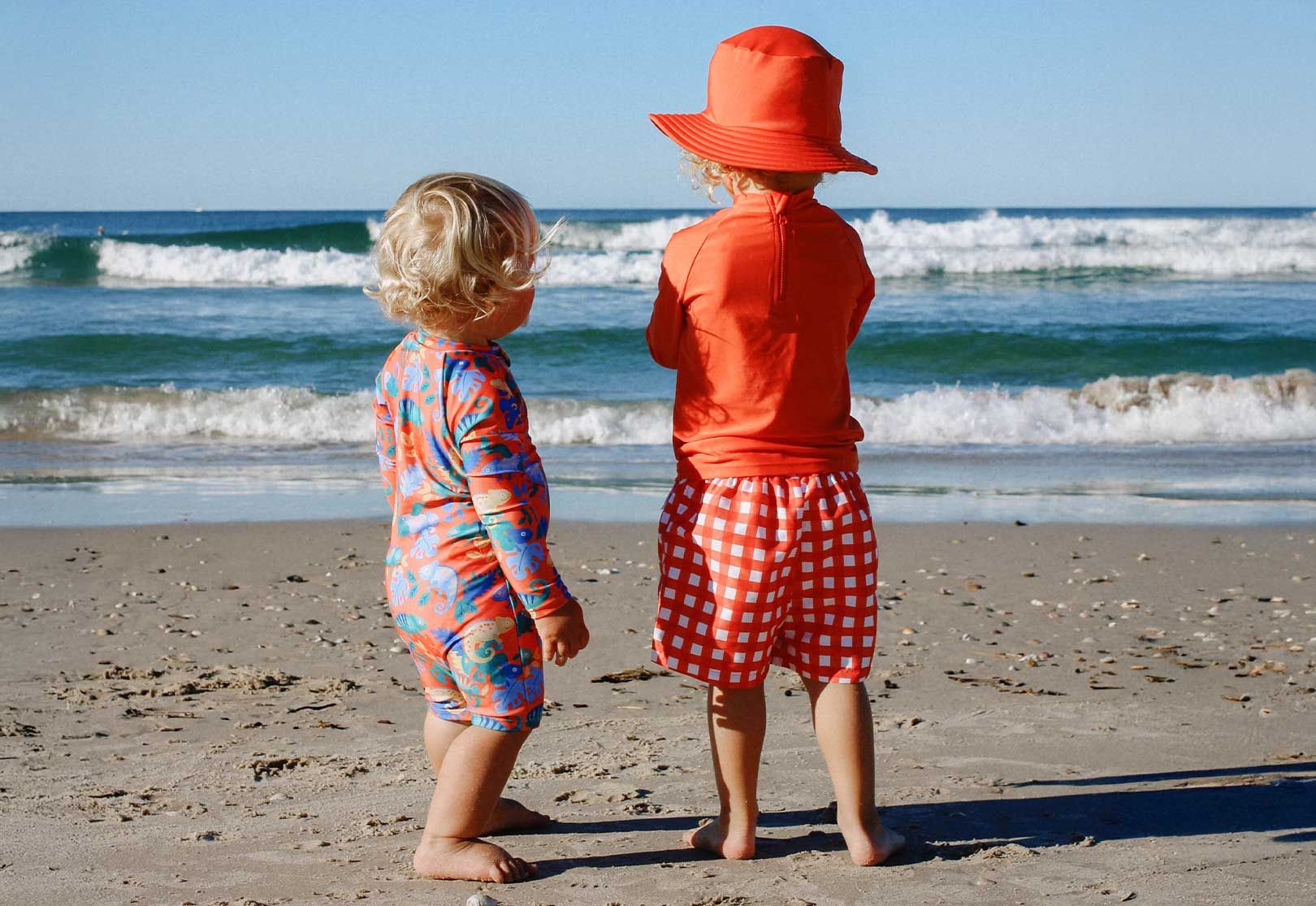
Whether you’re headed off on a family beach holiday or taking your little one to baby swimming lessons at your local swimming pool, it’s essential to find the right swimwear for your baby. Here are some key considerations to help you choose the right baby swimwear.
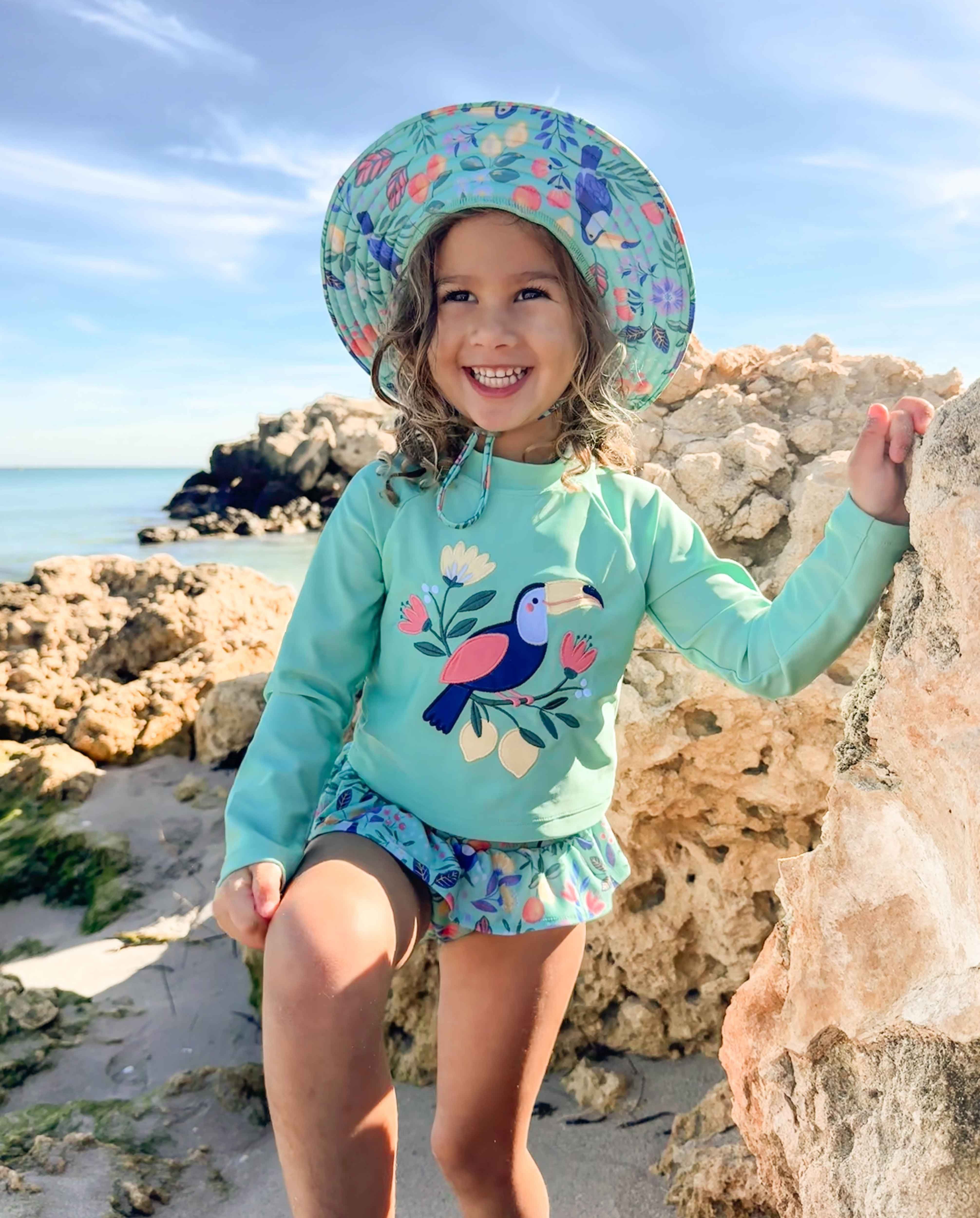
When choosing baby swimwear, there are a number of factors to consider, including material, style, size, and, of course, safety.
Babies and toddlers who aren't toilet trained should wear a swim nappy to help protect against unavoidable leaks in the water! Swim nappies are available in both disposable and reusable styles. Disposable swim nappies are like normal disposable nappies - they usually have an absorbent core which is designed to not swell up in water, and can only be used once. A reusable swim nappy is made from a tightly woven fabric like neoprene or a tight-knit polyester which holds solids in. Reusable swim nappies are designed to be washed and, as the name suggests, reused again and again, making them super eco-friendly.
The most crucial safety consideration when choosing a baby swimsuit is sun protection. Babies have extremely sensitive skin, so a swimsuit with good sun protection is a must.
Swimwear with an ultraviolet protection factor (UPF) rating of 50+ provides the best protection from the sun’s harmful rays. The fabric should be tightly woven to ensure UV rays can’t penetrate the material. Make sure the swimsuit fits snugly without stretching too much over your little one's body so that it maintain its protective qualities.
Your baby’s swimwear should have a snug fit to avoid excess fabric that could interfere with movement or cover the face. A well-fitting swimsuit also helps protect areas that might not be covered with sunscreen.
Choosing the right material for your baby's swimwear is essential for their comfort and safety.
Fabric:
Lightweight and breathable fabrics are ideal. If you're planning to spend quite a bit of time with your baby in chlorinated swimming pools, opt for swimwear made from chlorine-resistant fabric. Quick-drying and durable fabrics are also handy.
Warmth:
Tiny babies can feel cold easily, so if you're going to be swimming in cooler water choose baby swimwear with tightly woven fabrics that have plenty of coverage to keep them as warm as possible. If you're visiting a beach with very cold water temperature, a neoprene wetsuit might be the best option to help keep their body temperature at the right level.
Softness:
Look for soft, comfortable fabrics, as well as covered zipper flaps to avoid irritating your baby's skin.
Sustainability:
Purebaby swimwear
is made from Repreve fabric, which is created using recycled post-consumer products and other ocean landfill, making it both durable and eco-friendly.
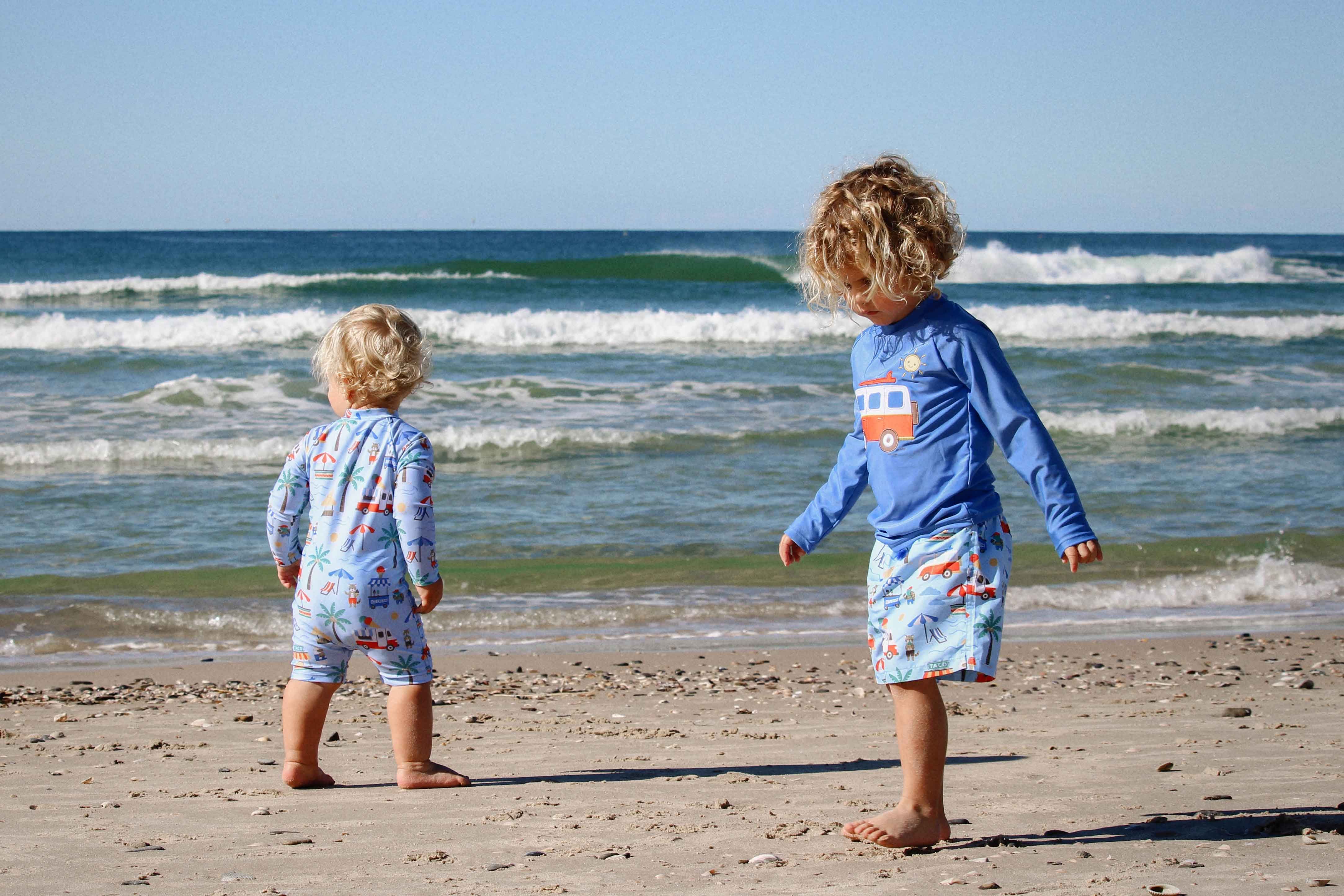
Baby swimsuits come in both one and two piece styles, each with its own advantages.
One Piece Swimsuits:
Long-sleeved swimsuits are great for babies and toddlers of all ages, but they're particularly good for younger babies. One-piece baby bathers offer maximum sun protection, as they completely cover the torso and back. This is particularly important as sunscreen is not recommended for children younger than 6 months.
Two Piece Swimsuits:
A two piece swimsuit can be more convenient for older babies and toddlers, as separate tops and bottoms can make nappy changes and going to the toilet much easier. Rashie sets (long-sleeve swim tops with tight-fitting swim trunks, nappy cover or board shorts) provide optimal sun protection and comfort.
For extra sun protection, add a matching swim hat! Look for broad-brim, adjustable styles made from UPF50+ material.
While it might be tempting to buy a larger size baby swimsuit for your little one to grow into, swimwear should fit perfectly to be effective.
Select your baby's swimwear size based on their current measurements to ensure the swimwear fits them snugly. Ill-fitting swimwear can either stretch and lose its UV protection or gape and expose skin to the sun. Plus, if your baby's bathers don't fit them properly, they might become uncomfortable and grumpy (and that's no fun at all!).
Click here to view our size guide.
Summer:
When swimming at the beach or an outdoor pool in the warmer months, always prioritise sun protection. Choose baby swimwear with maximum coverage and add a hat, sunscreen and sunglasses if you can. When you're not swimming, seek shade and keep your baby out of direct sunlight as much as possible.
Winter:
Look for long sleeve swimsuits made from warmer, thicker fabrics with extra coverage to keep your baby warm during colder months.
Rinse after use:
Rinse your baby's swimwear after each use to remove chlorine, sand, sunscreen, and body oils.
Wash with care:
Wash the swimsuit in cold water, either by hand or on a gentle cycle in your washing machine.
Dry properly:
Hang swimwear to drip dry immediately after washing. Never tumble-dry swimwear.
Avoid rough surfaces:
Keep baby swimwear away from rough surfaces to prevent thinning and wear of the fabric.
Minimise exposure to sunlight & chlorine:
If you can, limit excessive exposure to the sun's rays and chlorinated water to avoid damaging the swimsuit's fibres and prolong the life of the piece.
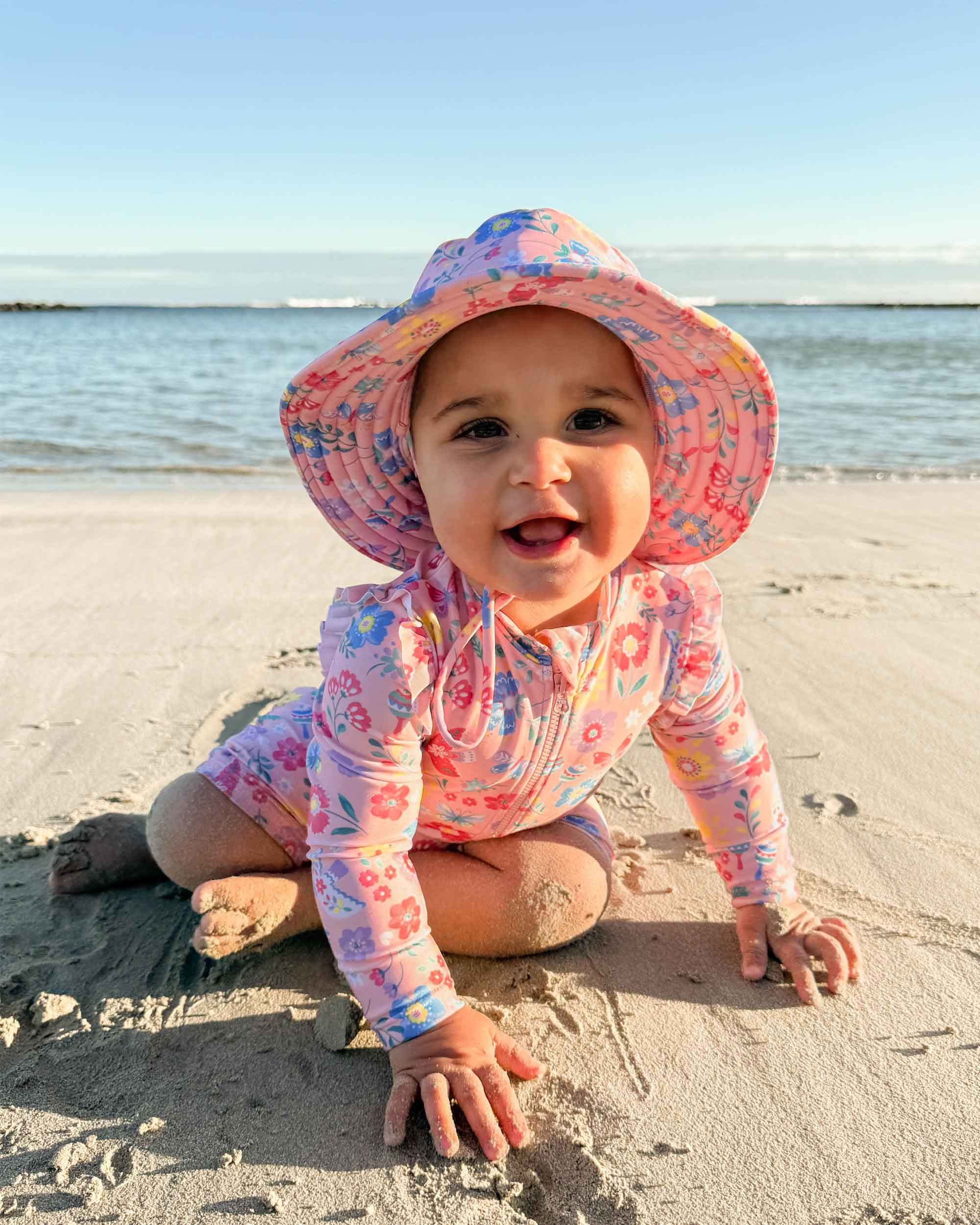
Discover our new range of baby and toddler swimsuits in baby boy, baby girl and unisex styles online and in-store at Purebaby.
Sign up to Pure Love Rewards and get $10 off your first online order, earn points every time you shop and more!